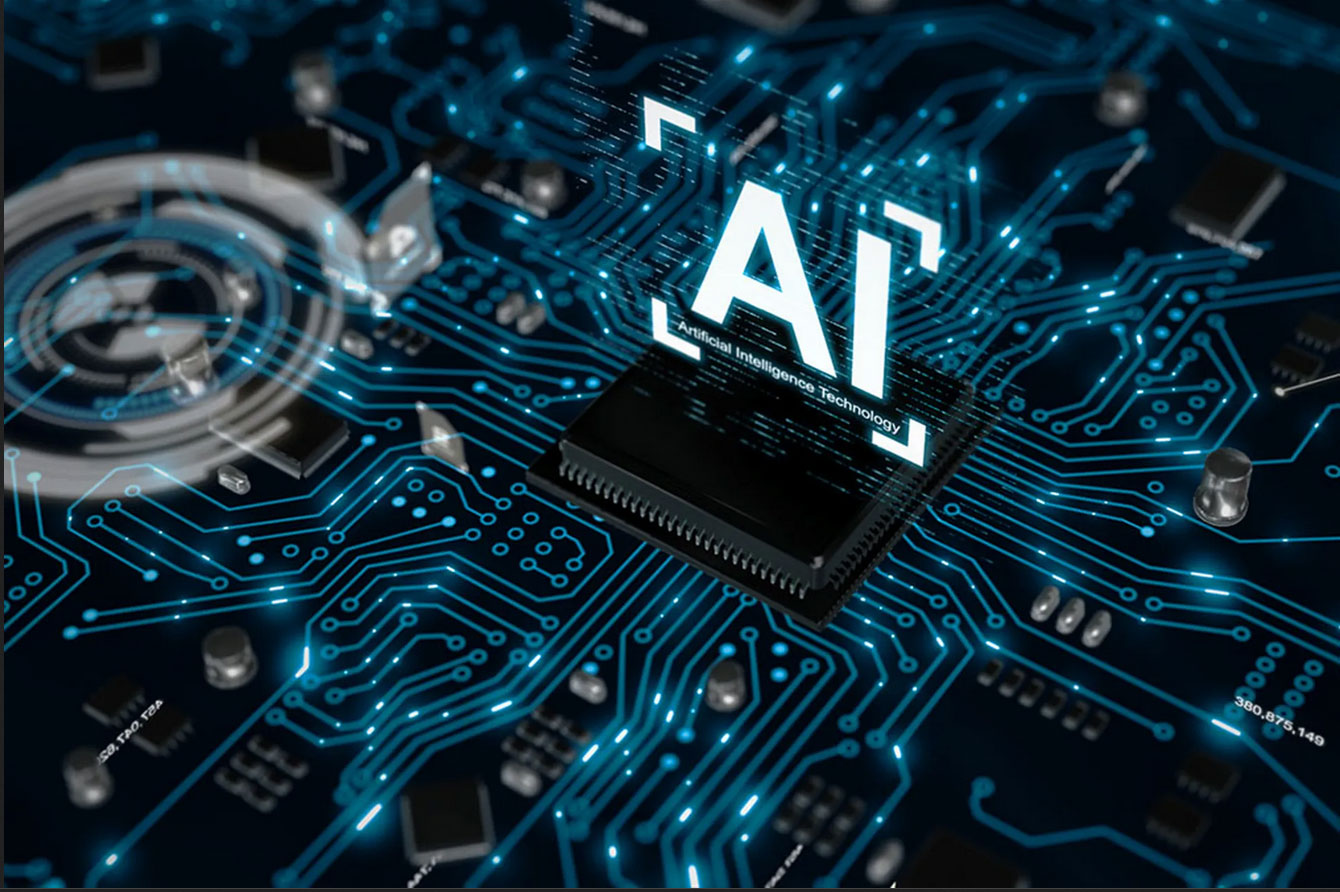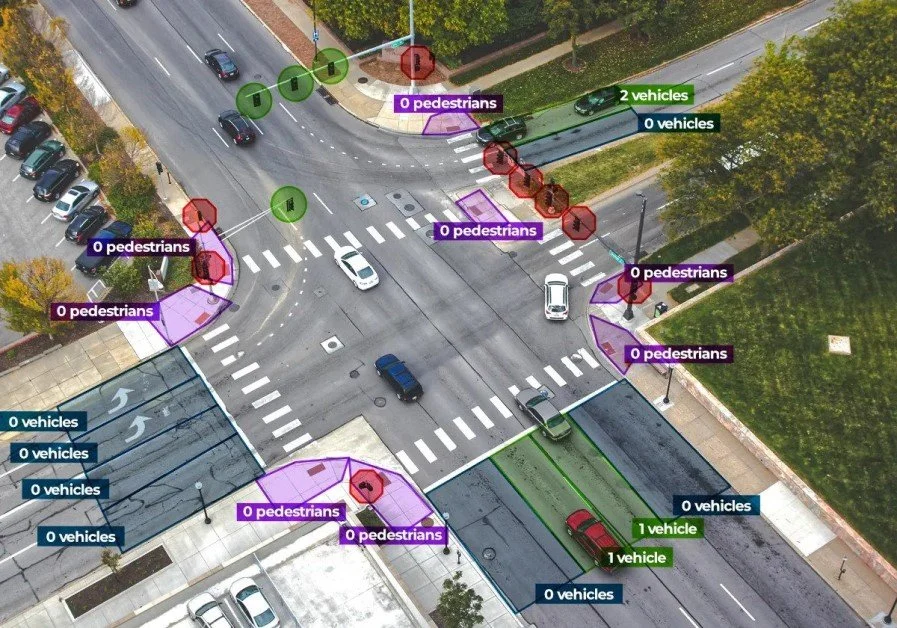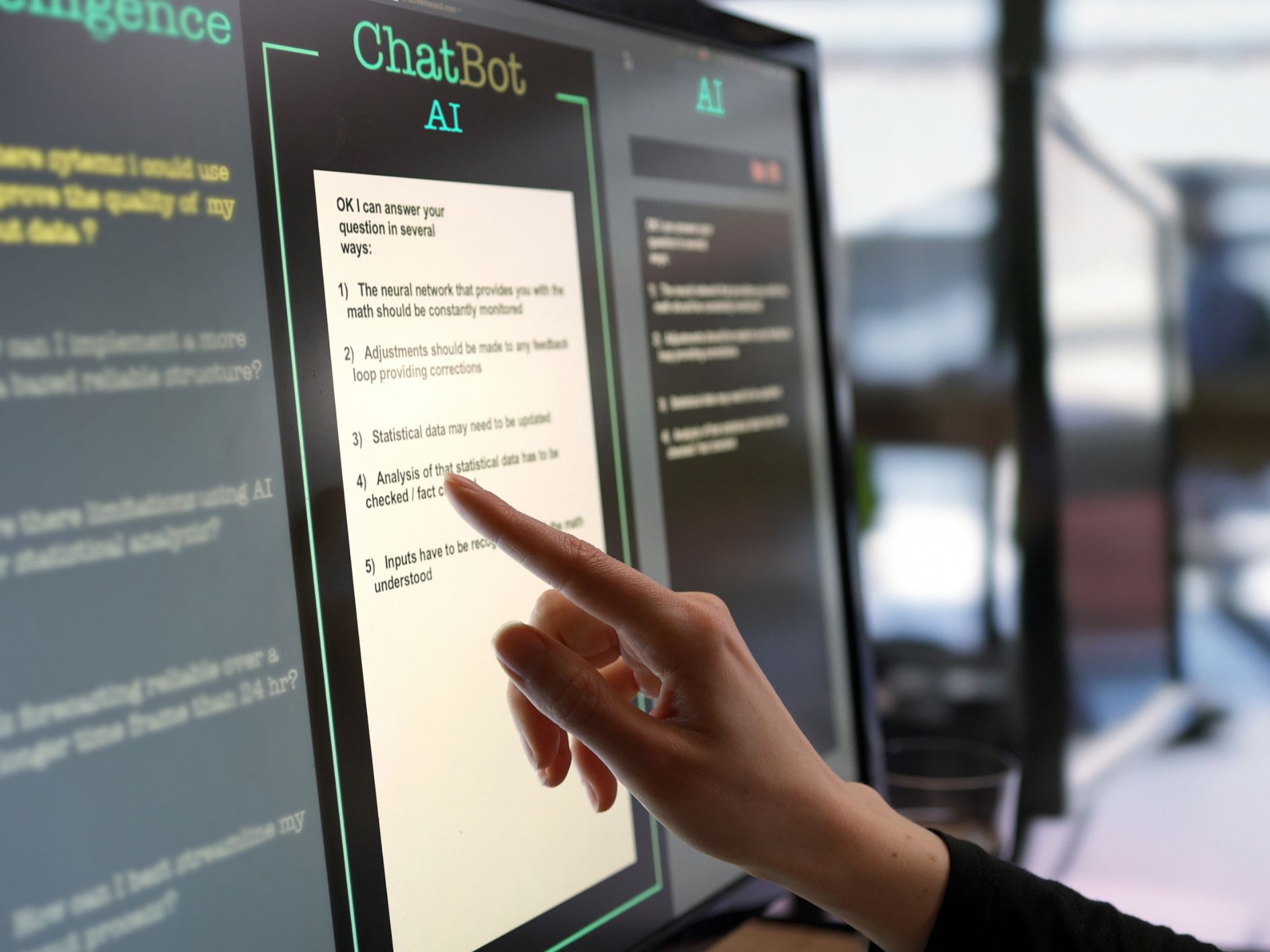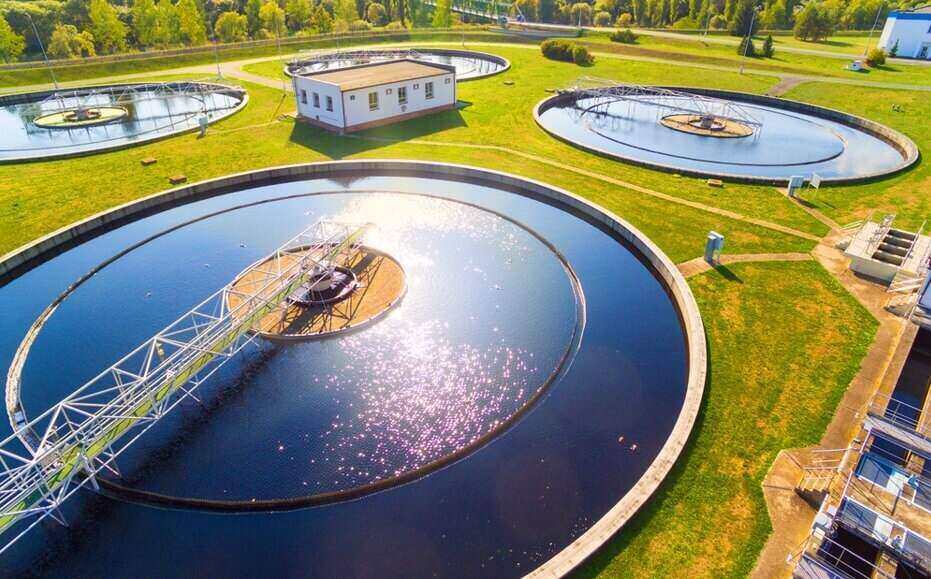Revolutionizing Infrastructure with AI
Game-Changing Technologies



AI enables cities to become smarter and more responsive
to the needs of their residents. By integrating AI into urban infrastructure,
cities can optimize traffic flow, reduce energy consumption, and improve public safety.
AI-powered systems can analyze vast amounts of data from sensors and cameras in real-time,
allowing for more efficient resource management, better traffic control, and quicker emergency
response times.
Benefits:
• Optimized Traffic Management: AI systems can predict traffic patterns,
reducing congestion and improving travel times.
• Energy Efficiency: AI can help manage energy consumption in buildings
and streetlights, leading to lower costs and reduced environmental impact.
• Enhanced Public Safety: AI-driven surveillance and monitoring systems can
detect unusual activities and alert authorities, improving response times and safety.
AI is revolutionizing transportation infrastructure by enabling
smarter, more efficient systems. AI technologies can optimize route planning for public transit,
improve the reliability of logistics networks, and even assist in the development of autonomous
vehicles. By integrating AI, transportation networks can become more resilient and adaptive,
ensuring smoother and safer journeys.
Benefits:
• Improved Route Efficiency: AI can analyze traffic data to suggest the
most efficient routes, reducing delays and fuel consumption.
• Predictive Maintenance: AI can predict when infrastructure
components like roads or bridges will need maintenance, preventing costly repairs and reducing downtime.
• Autonomous Transport: AI plays a crucial role in the development
of self-driving vehicles, promising safer and more efficient transportation in the future.
AI is key to modernizing energy infrastructure, making grids smarter
and more reliable. AI-driven systems can balance supply and demand more effectively,
integrate renewable energy sources, and detect potential issues before they become
problems. This leads to more sustainable energy use and improved resilience against outages.
Benefits:
• Load Management: AI can predict energy demand and adjust distribution in real-time,
preventing overloads and blackouts.
• Renewable Integration: AI can optimize the use of renewable energy sources like solar and wind,
ensuring a stable and sustainable energy supply.
• Fault Detection: AI systems can identify potential faults in the grid, allowing for preemptive
maintenance and reducing the risk of widespread outages.


In the construction and maintenance of infrastructure,
AI can enhance productivity, reduce costs, and improve safety. AI
technologies can assist in everything from planning and design to
monitoring construction sites and managing maintenance schedules.
By using AI, infrastructure projects can be completed faster, more
safely, and within budget.
Benefits:
• Automated Design: AI can generate optimized designs for infrastructure
projects, reducing errors and speeding up the planning process.
• Site Monitoring: AI-powered drones and sensors can monitor
construction sites in real-time, ensuring safety and efficiency.
• Maintenance Scheduling: AI can predict when infrastructure elements will
need maintenance, reducing costs and preventing unexpected breakdowns.
AI can also play a significant role in improving water and
waste management systems. By analyzing data from sensors and monitoring systems,
AI can help optimize water distribution, detect leaks, and manage waste more efficiently.
This leads to better resource management, lower costs, and a reduced environmental impact.
Benefits:
• Leak Detection: AI systems can monitor water pipelines for leaks,
reducing water waste and preventing costly repairs.
• Waste Optimization: AI can optimize waste collection routes and
schedules, improving efficiency and reducing fuel consumption.
• Water Quality Monitoring: AI can continuously monitor water quality,
ensuring safe and clean water for all residents.

While the potential of AI in transforming infrastructure is immense, the
journey is not without its challenges. At Golden Oak Technologies, we recognize that
overcoming these challenges requires foresight, innovation, and strong partnerships.
Here are some of the key challenges we and our partners may face as we work together
to revolutionize infrastructure with AI.
1. Data Privacy and Security
Challenge: AI systems rely heavily on vast amounts of data, which often includes
sensitive information. Ensuring the privacy and security of this data is critical,
particularly in public infrastructure systems where breaches could have serious
consequences.
Our Approach: We are committed to developing AI technologies that adhere to the
highest standards of data protection. This includes implementing advanced encryption,
anonymization techniques, and robust cybersecurity measures to safeguard data at every stage.
2. Scalability of AI Solutions
Challenge: Infrastructure projects often require solutions that can be scaled across large
and diverse environments, such as entire cities or nationwide energy grids. Developing AI
systems that are both scalable and adaptable to different settings is a significant challenge.
Our Approach: Our research focuses on creating AI chipsets that are not only powerful but also
highly adaptable. We work closely with partners to test and refine these technologies in
various real-world scenarios, ensuring they can be scaled effectively.
3. Integration with Existing Systems
Challenge: Many infrastructure systems are already in place and may be
outdated or incompatible with new AI technologies. Integrating AI into these legacy systems
without causing disruptions can be complex and resource-intensive.
Our Approach: We collaborate with experts in the field to
develop AI solutions that are designed for seamless integration. This includes
creating modular systems that can interface with existing technologies and
implementing phased approaches to minimize disruption.
4. Ethical and Regulatory Considerations
Challenge: The implementation of AI in infrastructure raises important ethical
and regulatory questions. Issues such as bias in AI algorithms, transparency, and the impact
on jobs and communities need to be carefully considered and addressed.
Our Approach: Golden Oak Technologies is committed to ethical AI development.
We work with regulatory bodies, policymakers, and ethics experts to ensure that our AI solutions
are fair, transparent, and beneficial to society as a whole. We actively engage in discussions
around AI ethics and seek to lead by example in responsible innovation.
5. High Development Costs
Challenge: The research and development of AI technologies for infrastructure can be costly,
requiring significant investment in both time and resources. This can be a barrier to innovation,
particularly for early-stage projects.
Our Approach: We seek to mitigate this challenge by forming strategic partnerships that leverage
shared resources and expertise. Joint funding opportunities, including grants and venture capital,
are also pursued to support the development of cutting-edge AI technologies.
6. Interdisciplinary Collaboration
Challenge: AI integration in infrastructure requires collaboration across
multiple disciplines, including engineering, data science, urban planning, and more.
Coordinating these diverse fields can be challenging but is essential for success.
Our Approach: At Golden Oak Technologies, we foster a collaborative
environment where experts from different disciplines work together towards a common goal.
Our partnerships are built on mutual respect, clear communication, and a shared commitment to innovation.
Overcoming Challenges Together:
At Golden Oak Technologies, we believe that by acknowledging and addressing these challenges
head-on, we can pave the way for successful AI integration in infrastructure. Our research
partnerships are key to navigating these complexities, and together, we can turn challenges
into opportunities for groundbreaking innovation.